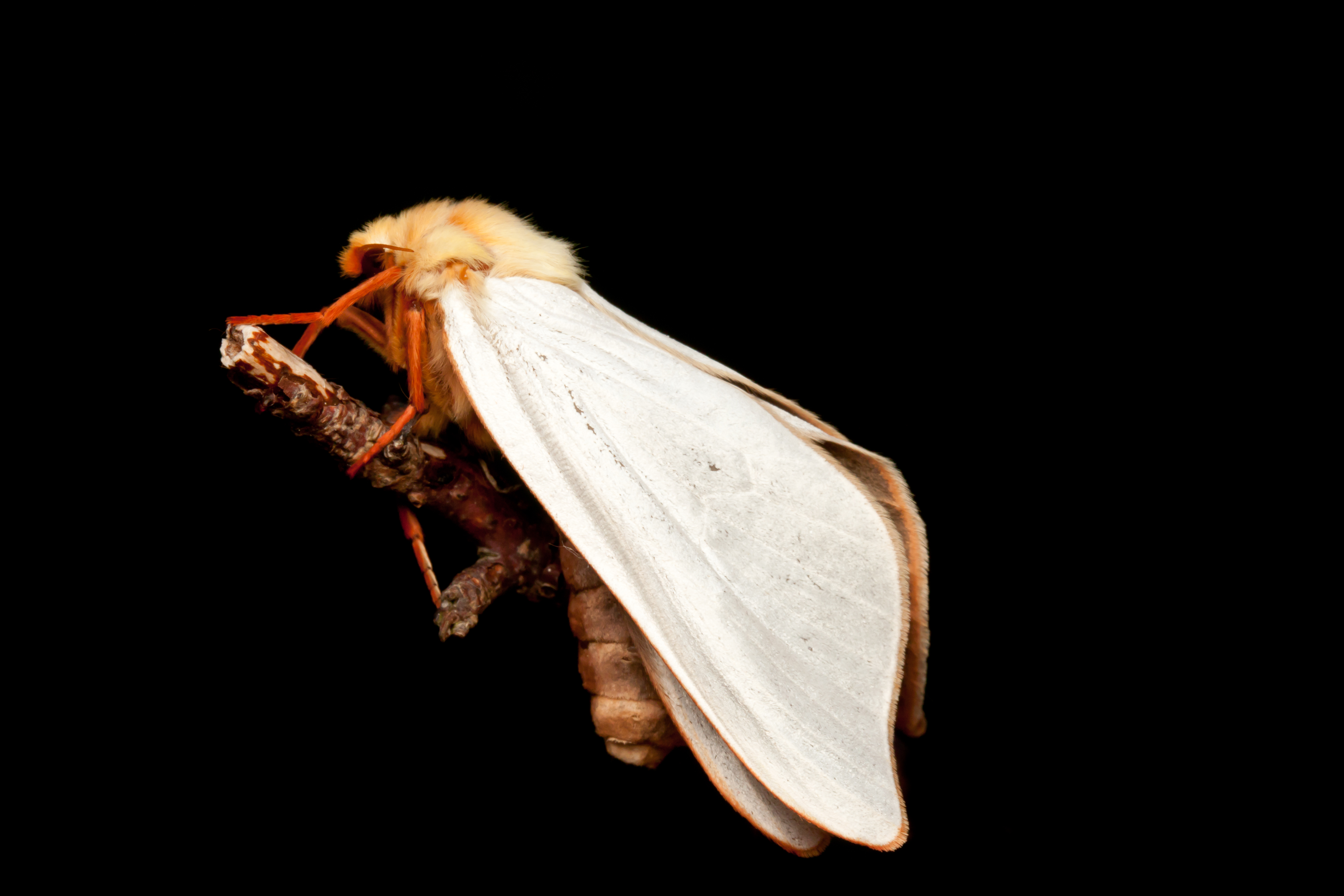Trick-or-Treat? Discover 10 Magical Moths for Halloween.
As Halloween approaches and the nights grow longer, thoughts begin to turn to the haunting antics of witches, ghosts and vampires, but the names and histories of some of our moths can give these spooky creatures a run for their money. Here are our top 10 species that have magical and mysterious connections to Halloween.
-
The Ghost moth.
The Ghost moth or Ghost Swift gets its English name from European folklore with some believing white moths to be the souls of the departed. It is thought that the ghost moth is also referenced in the last passage of Wuthering Heights by Emily Brontë.
The males, which are entirely white, can be seen at dusk, swaying during a flight display in which they will slowly rise and fall over open ground to attract females. In a suitable location, several males may display together in a lek. When at rest they hold their elongated wings almost vertically against their body.
The adults have short antennae and have no functioning mouthparts so cannot feed, eventually starving to death. The caterpillars can be found from July to May, often overwintering twice as larvae so the life cycle commonly takes two years to complete.
Discover more about the Ghost moth.
-
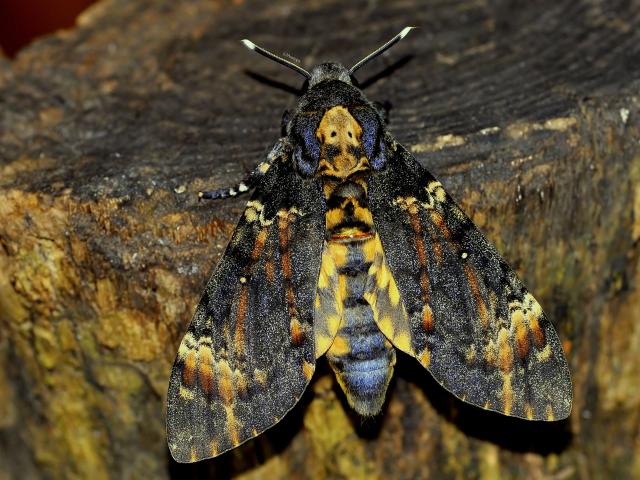
Deaths-head Hawk-moth.
As big as a mouse with wings the size of a small bat and the ability to squeak when alarmed, the Death’s-head Hawk-moth is sometimes considered the UK scariest moth and its arrival is traditionally seen as an omen of death. We know now of course that their occurrence is entirely natural rather than supernatural and usually ties in with wider moth immigration that takes place every year in the autumn as warm winds from the south bring in exotic species from the continent.
The rarely seen creature boasts a skull-like marking on its head, reflected in its scientific name, Acheronita atropos. In Greek myths, Acheron was the river of pain in the underworld and Atropos cut the thread of life. Despite the scarcity of its visits, the moth's sinister reputation has managed to haunt British literature, art and folklore for centuries.
First appearing as a prophecy of doom in writer Thomas Hardy’s The Return of the Native and an ill-advised love token in William Holman Hunt’s 1851 painting The Hireling Shepherd, the moth also famously featured in the 1991 horror blockbuster The Silence of the Lambs. It was even rumoured to have been a tormentor of King George III, who in 1801 was thrown into one of his bouts of ‘madness’ when two large Death’s-head Hawk-moths were discovered in his London bedchambers.
If you are lucky enough to receive an audience with a Death’s-head this Halloween, don't be afraid - this is one of our most fascinating, charismatic and decidedly spooky spectres.
Discover more about the Deaths-head Hawk-moth.
-
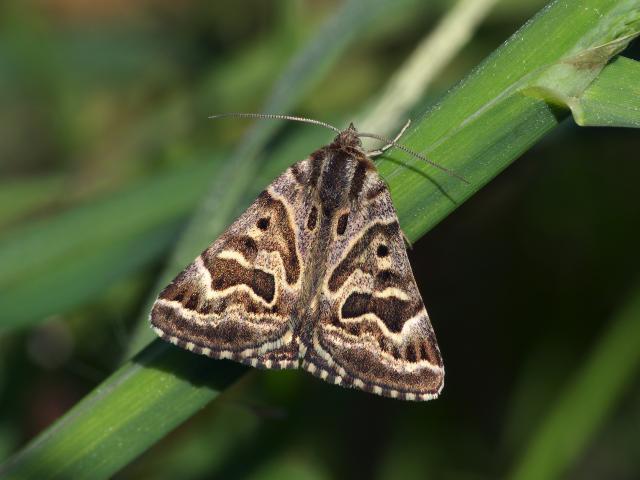
The Mother Shipton.
The Mother Shipton is distinctive with some believing that its creamy-coloured markings resemble the profile of the legendary Old Mother Shipton, a 16th-century prophetess and Yorkshire witch whose real name was Ursula Southeil.Mother Shipton, who was reputed to be hideously ugly, is largely considered to be a mythical character, who supposedly foretold the death of Cardinal Wolsey in 1530.
Quite who Mother Shipton was or what exactly she said is not definitively known. What is certain is that her name became linked with many tragic events and strange goings-on recorded all over the UK, Australia, and North America throughout the 17th, 18th, and 19th centuries.
Discover more about the Mother Shipton.
-
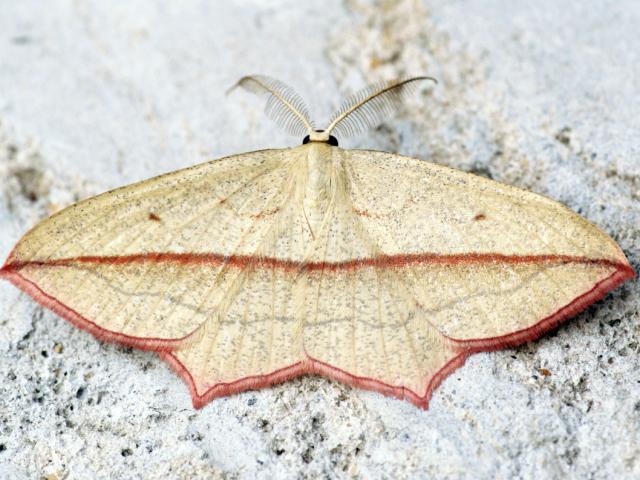
The Blood-vein
Named after the crimson line that stretches from wing tip to wing tip, with fringes that are suffused with pink, the Blood-vein is common and well distributed across most of Wales and England as far north as North Yorkshire. It has a scattered distribution in western and central Europe, north of the Alps and was first described by Anton Schmidt in 1931.
The Blood Vein's scientific name is Timandra comae. In Greek mythology Timandra was one of the daughters of the Spartan King Tyndareus and his wife Leda, the other sister was Helen of Troy. King Tyndareus managed to upset the goddess Aphrodite and was punished with a curse that all his daughters would be adulteresses. Daughter Timandra duly obliged, eventually marrying one King Echemus only to later desert him for King Phyleus.
Discover more about the Blood-vein
-
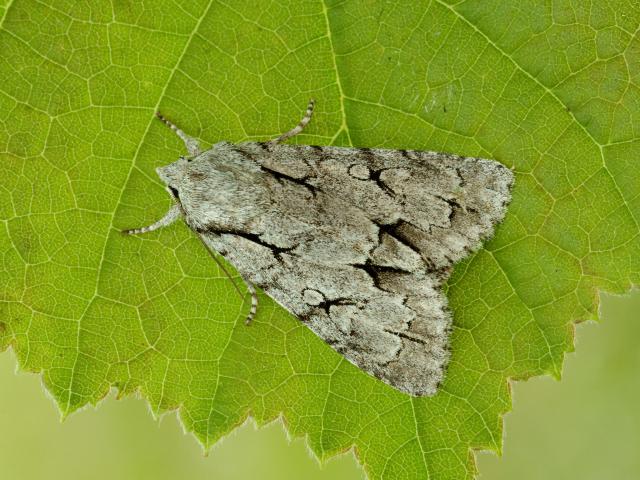
The Grey Dagger.
The daggers get their English name from the black dagger-like marking found on their forewings while the scientific name of the Grey Dagger, Acronicta psi also refers to these markings, resembling the Greek letter psi ψ.The striking red and yellow larvae have a distinctive tall black horn on their back, close to the head and can be seen between July and November. They overwinter as pupae under loose bark, in a dark crevice or in rotten wood.
Discover more about the Grey Dagger.
It is thought to be declining as a result of habitat loss, pollution, climate change and the use of pesticides.
-
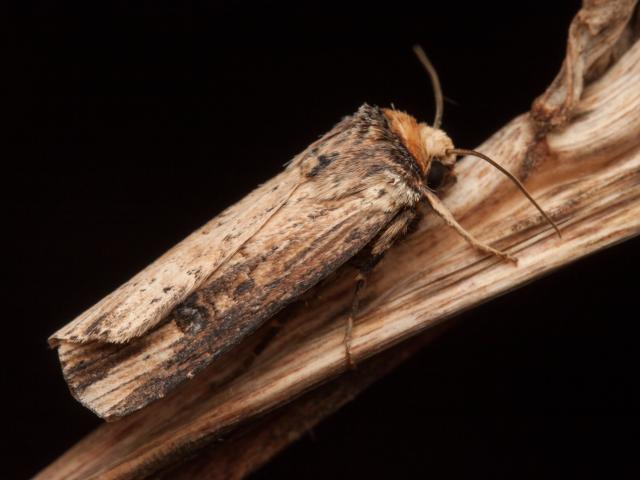
The Flame.
An invariable species with straw-coloured wings sometimes strongly tinged with reddish-brown. At rest, the wings are tightly folded around the body so the moth closely resembles a piece of broken stem or twig, providing the perfect camouflage against would-be predators.The adults are attracted to light and flowers. The caterpillars feed at night between July and October on a range of plants including White Dead-nettle and Hound's-tongue. Survives the cold winter months as a pupa underground.
Discover more about the Flame.
-
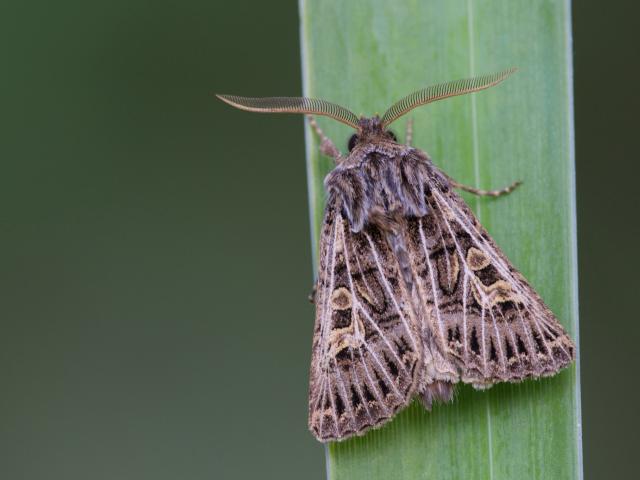
The Feathered Gothic.
With its off-white veins and skeletal like pattern, the Feathered Gothic is common and well distributed throughout most of Britain but very local further north. The males have strongly “feathered” antennae and are regularly attracted to light.
Winter is spent as an egg and the caterpillars break free in the spring, feeding on grass such as Sheep's- fescue under the cover of darkness, at first on the blades and when larger, descending to ground level to devour the stems.
Discover more about the Feathered Gothic.
-
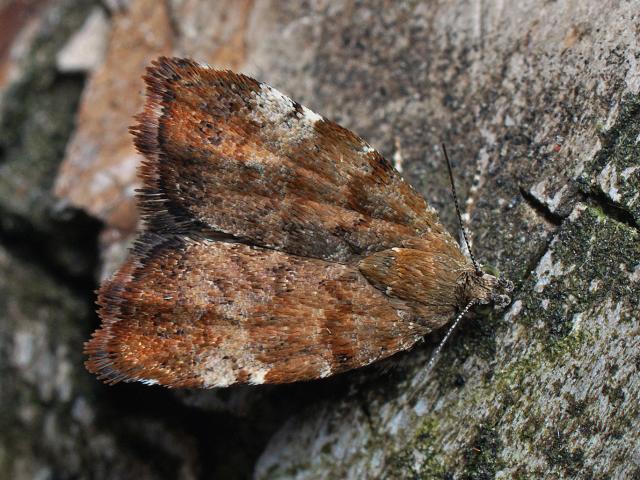
Apple Leaf Skeletonizer.
Sometimes referred to as the Apple-and-thorn Skeletonizer, so-called because of the caterpillar's habit of eating away tissue between the veins of the leaf surface of host plants such as crab-apple, resulting in a skeleton leaf appearance. From a distance, this can appear like the leaf tips have been burned. The caterpillar lives under the protection of a silken web.
Adults are reddish-brown, with a wingspan less than 0.5 inch and can be seen resting by day on leaves but are also attracted to light.
Discover more about the Apple Leaf Skeletonizer.
-
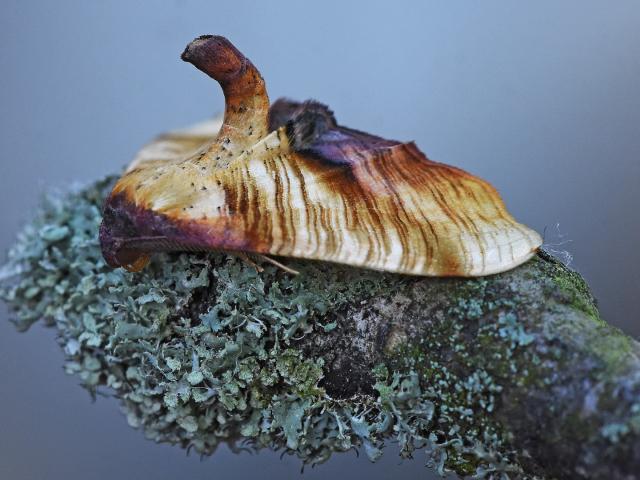
The Scorched Wing.
An unmistakable moth, the evocative English name of this species is derived from the moth's fanciful resemblance to burnt paper with its crumpled appearance.Adults are rarely seen by day, possibly roosting in the tree canopy and are attracted to sugar, but only usually the males come to light. Caterpillars can be found from late June to mid-September and winter is spent as a pupa, in a cocoon under the ground.
Discover more about the Scorched Wing.
-
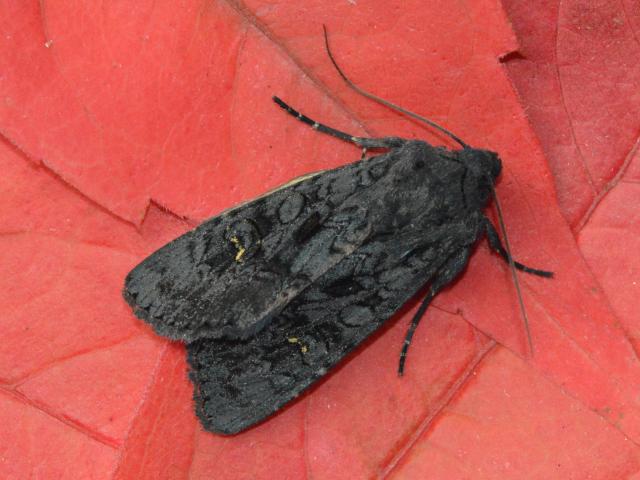
The Black Rustic.
With its long glossy black wings, the Black Rustic is an usually dark moth and its arrival signals thepassing of summer and the still months of winter ahead. It is common in the south with a scattered distribution in the north.
The magical-looking adults are attracted to light but will often feed on the juices of overripe Blackberries. Their caterpillars can be found between October and May, overwintering as small larvae and feeding at night, hiding within the foliage by day.
Discover more about the Black Rustic.
Andrew Cooper
Follow Andrew on twitter - @AndrewCooperBC


